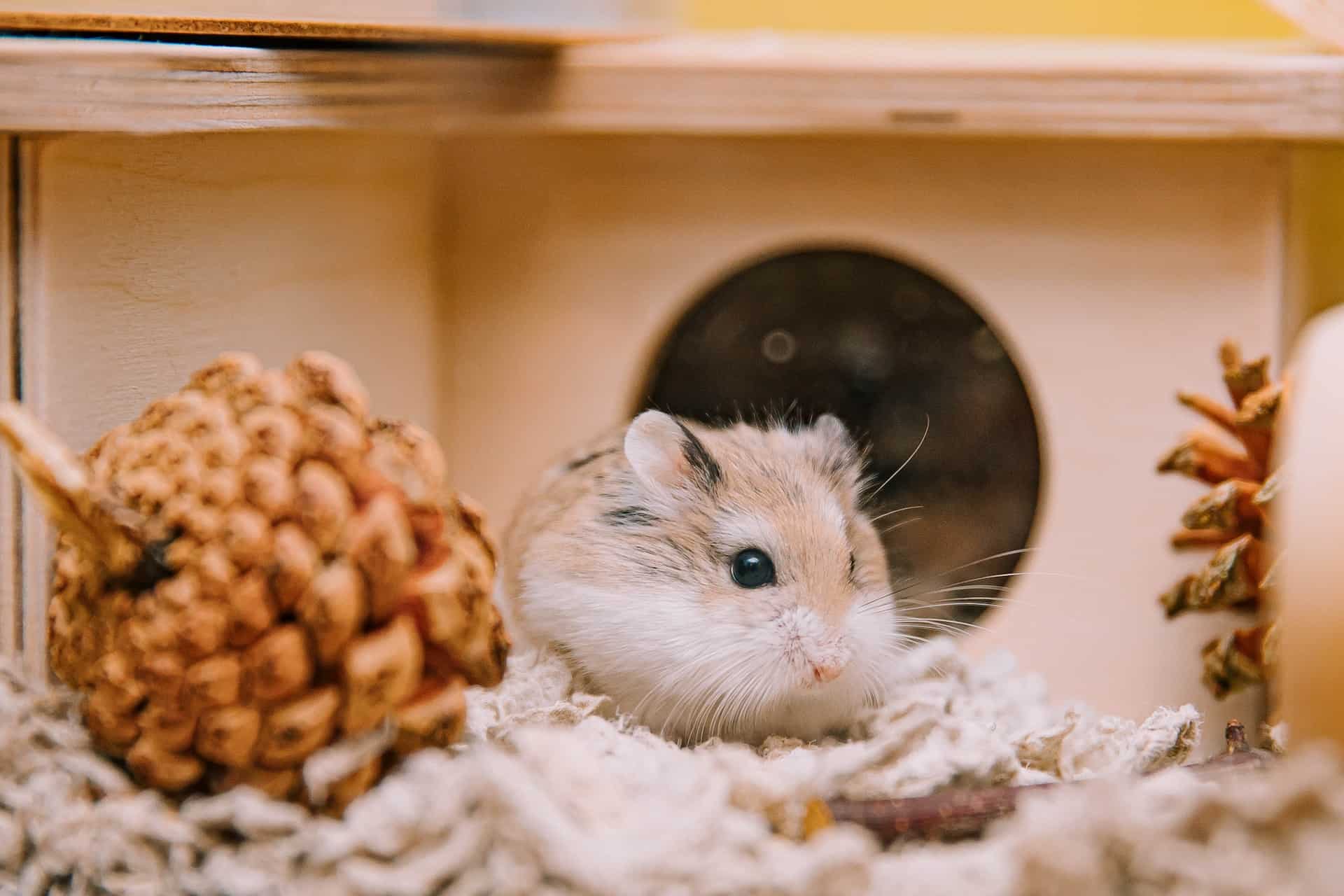| TL;DR: Hamsters can enter a state of deep sleep as a reaction to a non-optimal environment. This state shouldn’t last more than 2 to 3 days. But if their surroundings do not improve, they can stay in that state longer. However, the longer a hamster hibernates, the more dangerous it can be for them. |
Have you considered adopting a hamster? If so, knowing about their hibernation habits will come in handy. It can be a shock for new hamster parents to find their hammies in a deep sleep — sometimes with their eyes opened!
But there is no need to be alarmed.
This article will teach you what it means and how to best care for a hibernating hamster.
Why Hamsters Hibernate (and How Long Do They Stay There)?
Hibernation is a state of deep sleep many animals go through: bears, bats and even turtles all do it! It is a means of self-preservation, a planned and long-term process to endure the brutal winters.
Once an animal enters hibernation, their metabolism slows significantly: its heart and respiratory rates become slower and body temperature decreases. This is called obligatory hibernation.
???? Wait… Do All Hamsters Hibernate?
Well, it is not a yes-or-no answer.
Wild ones might, although it depends on the breed. Wild European hamsters, for example, are true hibernators.
Domestic hamsters, on the other hand, rarely do. Their living conditions are much more favorable and stable. Caregivers will provide them with food year-round, control their habitat and look after them. Instead, they can experience permissive hibernation or torpor.
While obligatory hibernation occurs only during winter, torpor is a deep sleep state that can happen at any time of the year, even in spring or summer. It is an unplanned, short-termed reaction to an environment that is not optimal for them.
???? Hamsters Hibernation Due to Cold Weather
Usually, if a hamster enters the torpor state, it is because it was exposed to low temperatures. They are susceptible to the cold; if exposed for a day or more, they must preserve themselves by entering deep sleep.
Hamsters’ ideal temperature is 65 – 75 degrees Fahrenheit; they will thrive in that range.
| Pro tip: Don’t set your pet hamster’s enclosure near air currents, especially during the colder months. |
???? Hamsters Hibernation Due to Food Shortage
Food and water supply shortages and an unbalanced diet can cause a Guinea Pig to hibernate. If these pocket-size rodents are not being fed properly and have scarce access to food or water, their instinct will urge them to save energy and go into torpor.
☀️ Hamsters Hibernation Due to Lack of Sunlight
Hamsters are also nocturnal beings and will get active and lively as the sun sets. But they do need daylight regularly. Their sleeping patterns can be disturbed if they are kept in dark environments for more than 24 hours.
| How Long Does Hamster Hibernation Last? When a hamster enters the torpor state, it can last for a couple of hours — and maybe you will hardly notice — or continue for up to five days. The longer hamsters hibernate, the more dangerous it is for them. They won’t feed or drink water during deep sleep, likely producing weight loss. If prolonged, it can lead to dehydration and hypothermia, possibly fatal outcomes, as the body might shut down completely. Torpor is a natural process. However, a hamster would only experience it if being cared for and under ideal husbandry conditions. Take it as an indicator to troubleshoot and improve its living conditions. |
Signs Of Hamster Hibernation
What does torpor look like? It can be pretty upsetting, as a hamster in this state can look like death. So, let’s break it down.
The most common signs to recognize a hibernating hamster include:
???? Being cold to the touch, particularly in their limbs, feet and tail
???? Being non-responsive
???? Heartbeat has slowed considerably, and it is hard to detect
???? Respirations becoming sporadic and less perceivable
???? Being limp when picked up but not completely stiff (this means there is no rigor mortis)
???? Food and water levels are the same as when you last checked them.
| Pro tip: Gently touch their whiskers if you’re unsure whether your hamster is hibernating. A slight twitch of the whiskers will indicate that they’re still alive. |
Caring For A Hibernating Hamster
As nocturnal creatures, hamsters usually sleep during the daytime. They need their rest, and it is essential to let them sleep. But when they become torpid, then it is best to step in and gently help them out of it.
For that, you need to improve the hamster’s surroundings. Do it slowly and progressively, as any sudden change could jeopardize their recovery. The sooner you take action, the quicker and easier it will be.
Here are some tips:
1. Raise the environmental temperature
If your hamster has been hibernating for 24 hours or less, it may need to be warmed back up. Increase the room’s temperature by turning up the thermostat or with a space heater. You can also place a warm water bottle (not too hot, though) close to them (not too close).
| ???? Pro tip: The hamster should not receive direct heat; the environment should get warmer. |
2. Make sure they receive enough light
If torpor lasts longer than a day, or your hamster doesn’t revive by increasing the room temperature, illuminate their cage for at least 12 hours straight.
But be careful with the light you choose — if it is too warm and direct, it can harm your hammie. Heating lamps, for example, are not recommended.
3. Use your body heat
Hold them gently in your hands or against your chest. You can wrap a piece of fabric or towel around them — although you should leave their nose uncovered — and stroke them delicately in the back and limbs.
This will help their blood circulate quicker, and your hamster will warm up naturally.
4. Provide nourishment
During their deep sleep, hamsters won’t feed; they must have access to enough water and food – they may wake up hungry and thirsty! It is best to give them small portions at first to prevent them from gorging. You can feed them warm food also, to help them keep warm.
If your hamster doesn’t come out of inactivity after a few hours of warm temperatures and stimulation, consult the vet. They may prescribe medication, if needed and offer guidance on husbandry practices to prevent future torpor episodes.
Final Thoughts
Hamsters can display an array of quirky behaviors. The best way to care for them is to know their moods, habits and routines. The better we know them, the sooner we can know if something is wrong.
A healthy enclosure is vital for a happy hamster. The environment we provide should never force them to hibernate. Plenty of food, ideal temperature and love will make those furry little friends our joyful companions.
| SOURCES Manucy, T. (2022). Do Hamsters Hibernate? petmd.com Racine, E. (2021). Do hamsters hibernate? 5 things to know before you buy a hamster. petsradar.com Veterinary Practice (2018). Is my hamster hibernating or dead? veterinary-practice.com |





